Notes
The Meaning of Emma in the Visual War on Parkland’s Survivor Activists
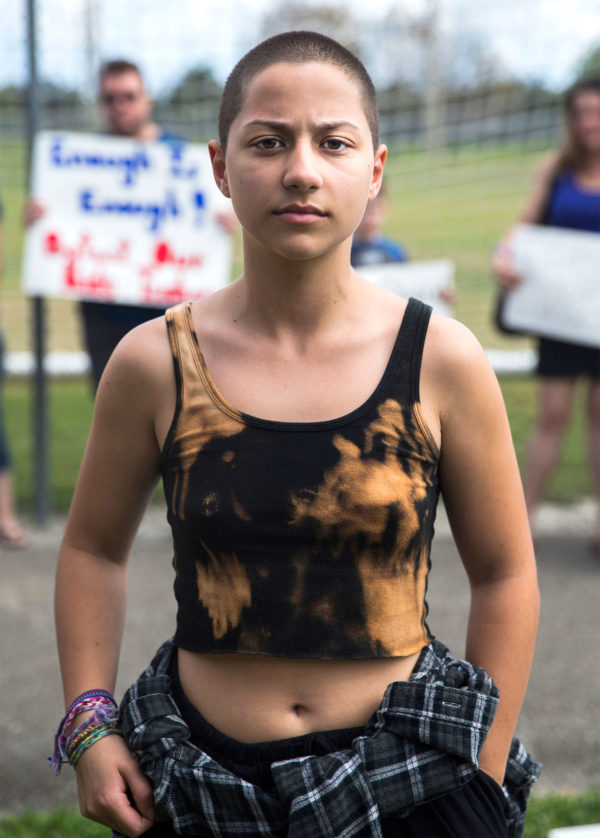
In the weeks since the February shooting at Marjory Stoneman Douglas High School in Parkland, Florida, the media scrutiny of its teenage survivors has been relentless. It has been further fueled by their powerful speeches at the March for Our Lives earlier this month: TIME Magazine featured them on their cover, Teen Vogue and Harper’s Bazaar published their op-eds; their faces appeared on protesters’ placards, T-shirts, posters and on city murals.
While for many they represent agents of change, moral referents, latter-day anti-Vietnam War activists, and future leaders, alt-righters, white supremacists, conservatives, and Donald Trump supporters (with the enthusiastic endorsement of the First Son, Donald Trump, Jr.) have declared war on them. In this war, an AR-15 semiautomatic rifle is replaced by such weapons as slander, conspiracy theories and misinformation. Parkland students are portrayed as “crisis actors” paid by George Soros or political puppets of Hillary Clinton; they are likened to Nazis, to terrorists, to “young fascists-in-training” who undermine the fundamental principles of American freedom.
This campaign relies on images of hate, as photographs, memes, and videos are circulated by right-wing media outlets, such as Breitbart, Infowars, and others on social media. Digitally doctored or taken out of context, they ridicule, troll, attack, and mock: in a recent image, David Hogg is made to appear as though he is making a Nazi salute after his speech at the March for Our Lives event in Washington, D.C.; in another, his speech is dubbed over by Adolf Hitler, his voice captured, silenced, and controlled through the misappropriation of technology.
In the visual fallout of the Parkland shooting, we can no longer assume the inherent truth of the image, as concepts like meaning, portrait, representation or mimesis, traditionally considered in the medium of photography, are rendered obsolete through the art of technological deception.
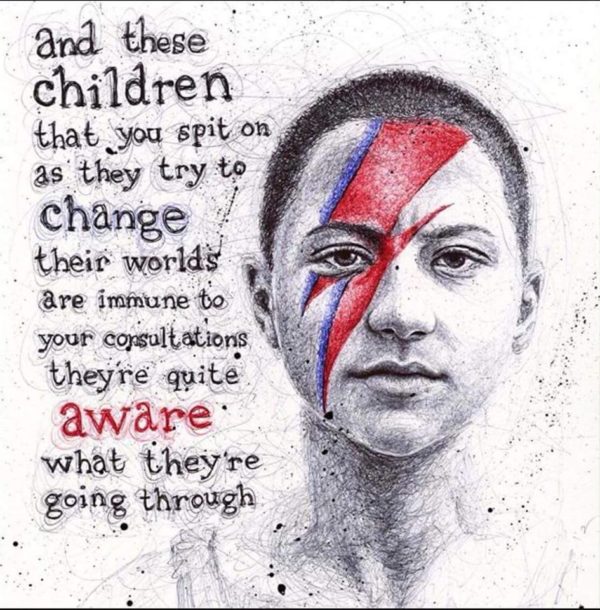
Of the Parkland survivors, few have been affected by these visual strategies more than Emma Gonzalez, an 18-year-old Cuban-American Stoneman Douglas senior. Since her passionate speech at the rally in Fort Lauderdale, when she repeated the phrase “We call BS” in response to NRA-funded politicians and gun advocates, her face boldly stares from the screens around us, located at the forefront of the news and social media commentary.
Emma’s shaved head, strong posture, and fierce expression have become the visual trademark of political dissent and generational change, a contemporary Rosie the Riveter.
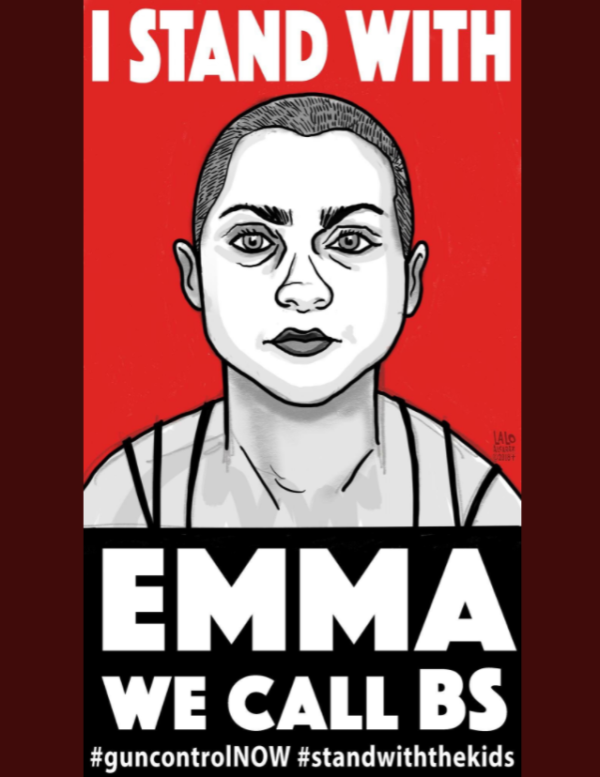
Like every iconic image of a leader (such as Obama’s HOPE poster or Che Guevara murals), the visual coverage of Emma transgresses the medium of photography to merge with paintings, murals, prints, and various artwork. As her image travels, we are faced with one question above others: where does the desire to reproduce and replicate Emma’s face come from?
Perhaps an answer can be found in the ways that Emma speaks to, as much as for, much of the nation’s concerns. She is celebrated not only for her political convictions and her courageous activism. A lot of public fascination comes from our inability to put her in any category. Emma is liminality: she is simultaneously strong and fragile; she is a teen and almost an adult; she is a woman that rejects the attributes of normative femininity; she is an American daughter of Cuban immigrants; she is a victim that rises. And, most of all, she is a child, the primary paradigm of care and protection, a symbol of American future-forward discourse.
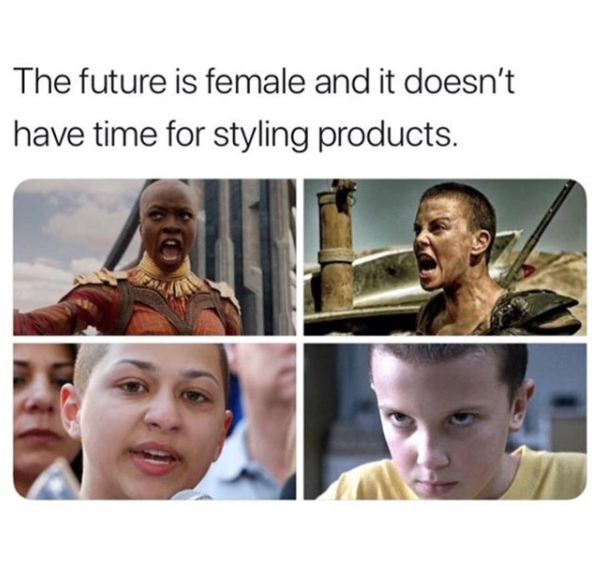
Despite these paradoxes, audiences desire to solidify her, to render her tangible, to capture her in one picture. And yet, her image remains ungraspable. Some photographs capture her vulnerability, reminiscent of the portraits of teenagers by Gillian Wearing or Rineke Dijkstra. Others celebrate her as a semi-fictional super hero, impervious and unstoppable. The most successful are the ones that capture both, as in the first image in this essay.
There is another reason for this visual fascination – it is the power or interpellation, of recognition. Over a year into the Trump presidency, many groups — women, Latino immigrants, queer communities — have been attacked and belittled, not only by the president himself but also by the obstinate tactics of the Republican right. As openly bisexual, Latinx, and female, Emma represents the vulnerabilities and interests of multiple groups in the face of a U.S. politics of social justice.
But for the same reasons her image is beloved, it is also despised and abused.
The vitriol leveled at her is incomparable to other survivors exactly because of her multi-faceted identity. Emma’s image becomes a gateway to various forms of hate: her ethnicity, her gender, and her sexuality often figure prominently in online rants about her. Threats and attempts to incite violence against her populate sites like The Daily Stormer; hate groups proliferate on Facebook as fast as the platform tries to remove them. On Reddit, the comments pass unchallenged as threads flourish undisturbed by content moderators.
But it is the racist, sexist, and homophobic remarks about her face and her body that are most common. Leslie Gibson, a Republican candidate for the Maine State House, called her a “skinhead lesbian” in a Twitter post, before being forced to drop out of the race after drawing heavy criticism. Elsewhere, she was condemned for wearing a Cuban flag patch on her jacket by conservative commentator Andrew Wilkow and by Steve King, the Republican congressman from Iowa. Portraying her as a Castro supporter, these men attempted to inscribe a political narrative on a child’s celebration of her heritage.
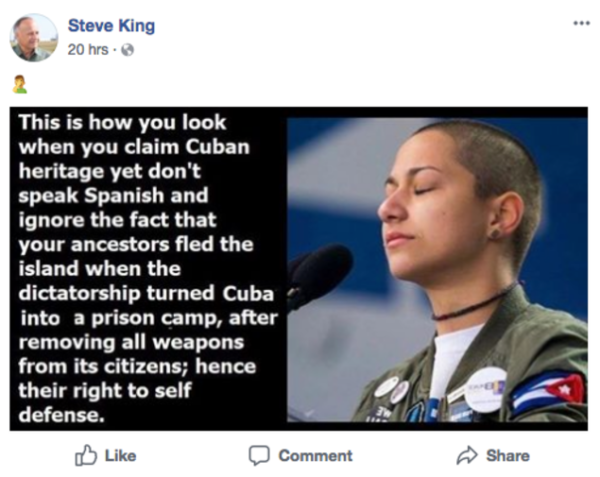
Hatred coalesces not only around authentic photographs – it also is pushed by fake photographs and videos that create compelling viral stories traveling quickly across social media.
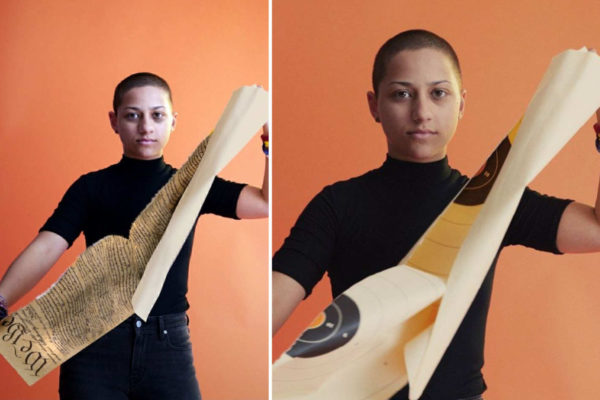
The political and aesthetic value of these images lies less in their pro-NRA ideology than their radical contestation of facts and reimagining of reality. Last week, the doctored video of Emma ripping apart the Constitution of the United States was promoted on Gab, the alt-right alternative to Twitter. A version disseminated from a fake Twitter account gained over 65K retweets.
The original image, a screenshot of a video produced by Teen Vogue to accompany an op-ed mentioned above, features her tearing up a paper shooting target. Yet the constructed clips, while false, are nonetheless still used as evidence for fictional claims, as seen recently in the case of the Deepfakes phenomena. The result is that a further concern is raised, regarding the political aspect of consent, truth, misinformation, and propaganda.
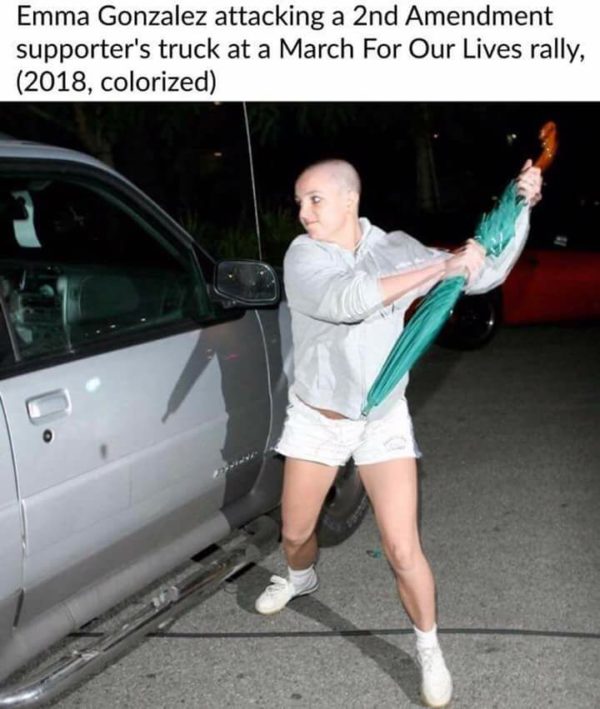
This trope continues with another hoax, in which a miscaptioned photograph shows a woman with a bald head as she is about to hit a vehicle with an umbrella, posted on the Facebook hate-site, America’s Last Line of Defense, that was subsequently shared over 10,000 times. Under the image, the miscaption reads: “Emma Gonzalez attacking a 2nd amendment supporter’s truck at a #MarchForOurLives rally (colorized).”
Actually, the image captured pop star Britney Spears in 2007, during an incident that was widely covered at the time. Within this, the visual trope of the angry female, who does not comply with conventional beauty standards, is conceived as loathsome, a perception that remains unchanged even by Beyonce’s Lemonade.
Despite attempts by online trolls and alt-right politicians, Emma is not going anywhere soon. Stronger and more resilient than the creators of the fake footage, her six-minute silence during the March for Our Lives rally (paradoxically) spoke of a power and courage that cannot be undermined by memes, and suggests the hope that she can lead us to a new reality, where politicians cannot be bought, an administration cares about children and students, private companies have social responsibilities, and schools are safe spaces. In doing so, Emma is not just a face on the cover of Teen Vogue, she is the face and voice of a better future.
— By Marta Zarzycka | @mjzarzycka
Photo: Nicole Raucheisen/Naples Daily News via USA TODAY NETWORK/Sipa USA Caption: Sunday, February 18, Emma Gonzalez, 18, a senior at Marjory Stoneman Douglas High School poses for a photo at North Community Park. Gonzalez became a viral sensation after videos of her impassioned speech at an anti-gun rally in Fort Lauderdale flooded social media. Now, she is helping to lead the #NeverAgain movement with her fellow classmates. 2018; Photo 2: Image posted on Facebook by Iman, philanthropist, entrepreneur, and David Bowie’s widow; Photo 3:via @laloalcaraz/Twitter; Photo 4: via intomore.com; Photo 5: via Steve King on Facebook; Photo 6: Twitter/Teen Vogue Caption: The doctored image of Gonzalez tearing up the Constitution, alongside the original Teen Vogue image on the right; Photo 7: via America’s Last Line of Defense Facebook group.
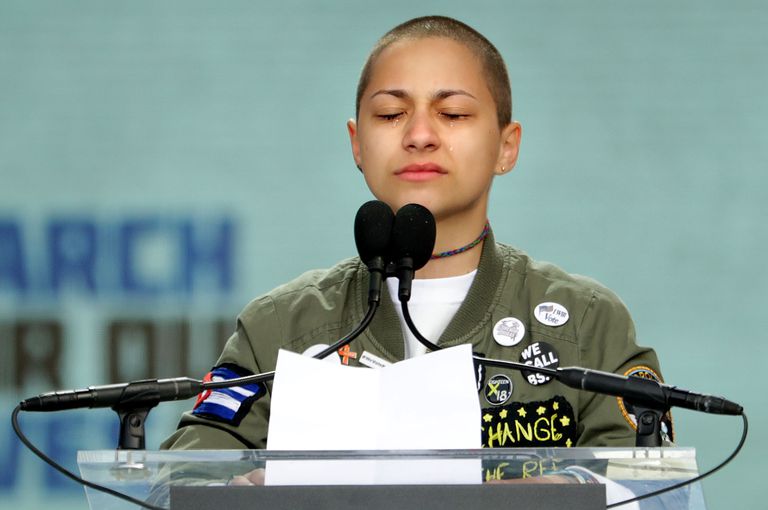

Reactions